What To Know Before Building A Raised Garden Bed
You have decided to install a raised garden bed to grow some vegetables or flowers. Like any project, you need to spend some time researching the properties of raised garden beds. With careful analysis and planning, you can correctly set up a garden bed on your first try, which helps you eliminate unnecessary headaches and loss of money. Below are some things you might need to take note of when purchasing a raised garden bed.
Determine Size Of Raised Beds
Before starting, you need to decide on the size of your raised garden beds. In most cases, these beds have a width of three to four feet, while the length may vary from six to eight feet. Choose the right size to ensure you can work comfortably to reach your plants. Easy reach into the bed from any side makes it comfortable to dig, plant, and weed your plants.
Height is also an important aspect that you need to decide on depending on the type of plants you choose. Plants have differing depth requirements depending on their root systems. When it comes to vegetable beds, the bed must be approximately 12 to 18 inches deep to ensure adequate depth for the roots of your plants. This is especially important if your raised bed is set on cement or the patio, which will inhibit roots from growing deeper.
Vego Garden's metal raised beds are modularly designed with flexible configuration options to fit any back or front yard space. Check out our 6-in-1, 9-in-1, 10-in-1 and round beds for details.
Vego Garden 17" Tall 6-In-1 metal garden raised bed is designed for urban gardening with its optimized size for a small-medium backyard..
…17" Tall 6 In 1 Modular Metal Raised Garden Bed Kit
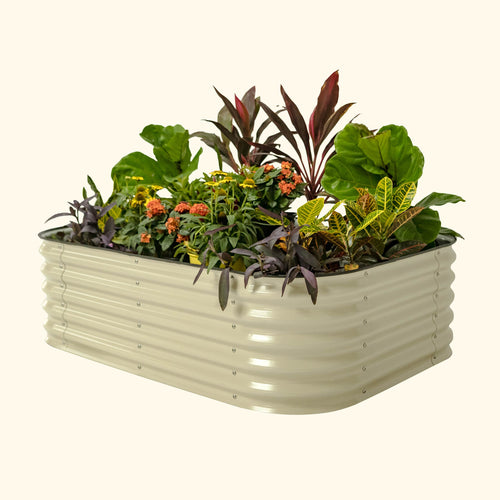
The classic of the classics, this is the first raised garden bed kit we launched. The 3.5' x 6.5' and 2' x 8' configurations are among the most iconic designs for anyone who is new to garden beds. The height is also great for easy, quick access when gardening and assists in keeping slugs and pests at a minimum too. Great for growing herbs, succulents, veggies, or flowers.…17" Tall 9 In 1 Modular Metal Raised Garden Bed Kit
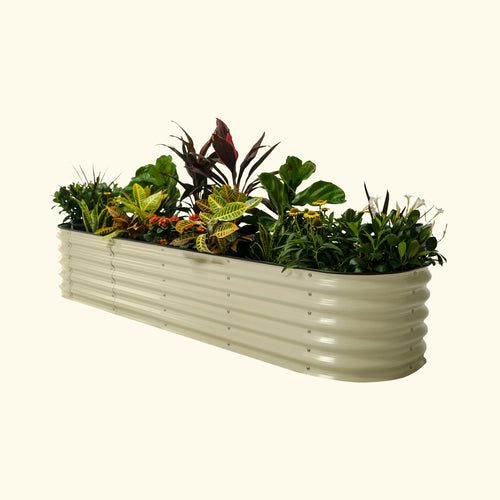
10-in-1 is the Texas-sized garden bed! This kit offers a spacious growing area with configurations including 4' x 8', 2'5" x 9'5", 6' x 6' or 7 other options. You can choose which configuration of the 10 possible designs best fits your space and maximizes your garden.…17" Tall 10 In 1 Modular Metal Raised Garden Bed Kit
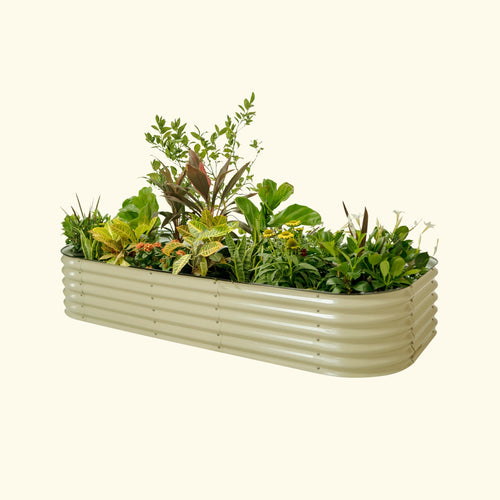
The 42'' round bed is an ideal size for small veggie patches. The round shape makes it super easy to plant seeds or plant starts, which is a great fit for an extended patio for herbs, onions, strawberry patches and avocado trees.
…17" Tall 42" Wide Round Metal Raised Garden Bed Kit
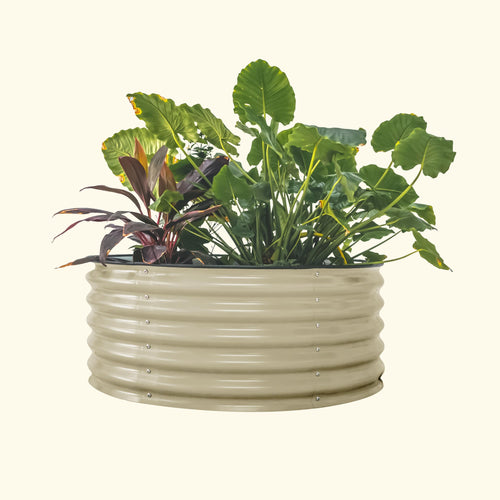
Since our garden beds are 17″ and 32″ deep, they are deep enough to cultivate a medley of vegetables, including those with deep root systems. A deeper bed also allows for more moisture retention, leading to less watering and chance of drying out. If you are experiencing mobility issues, back strain, or just simply dislike bending over, a taller raised garden bed will facilitate your gardening experience. Our extra tall 32″ garden bed kits significantly reduce back strain whenever you are tending or harvesting your garden.
The Ideal Spot
After determining the size, you have to find the ideal spot to place your raised bed. Ample sun is necessary for most plants to flourish, especially vegetables. You should choose a sunny spot in your garden to situate your garden beds. Don't restrict yourself to the backyard as you can choose your driveway or front yard as well. Raised garden beds can be placed anywhere – the backyard, front yard, patio – even the balcony and rooftop. Just remember to choose a place that receives at least six hours of sunlight.
Type of Soil
Because raised beds are elevated off the ground, it is important to use an absorbent soil mix to help retain moisture and nutrients. The ideal soil type is sandy loam, which is essentially soil that is loose, well-draining, and rich in organic matter. You can buy specialty bagged raised garden bed soil to fill your raised bed or you can experiment by combining garden soil with potting soil, making sure to use more garden soil than potting mix, usually at a 5:1 ratio. Compost is the ideal soil amendment because it enriches the soil with essential nutrients without leaching chemicals into the soil. You should periodically apply organic compost or mulch to your garden bed to improve the soil quality.
Watering Your Plants
When you choose the area to place the raised garden bed, it is important to consider the water source, as both overwatering and underwatering can have detrimental effects on your plants. The place you chose should have nearby water access. To avoid constant watering, you can also opt for a drip irrigation system with a line connected to the water source, like a tap or rain barrel, to your raised garden.
Many people will just use a lawn sprinkler system, which is inefficient. This wastes water and often causes problems related to fungal diseases. If you are planning on building only a few raised garden beds, a soaker hose is fine. They may be a good alternative if an irrigation system is too expensive. Also useful are indicator plants such as lettuce, which will quickly wilt if they don’t receive enough water.
Choose The Right Plants
If your location receives sunlight for at least six hours, you can grow almost anything in your raised beds. If you are a beginner, you should start out with easy to grow vegetables including tomatoes, zucchini, and bell peppers. Herbs such as basil, thyme, and mint are also easy to grow and tend to. We have an Herb Garden Kit, which consists of two sets of oval shaped beds, ideal for a compact herb garden or a fruit tree.
When choosing the types of plant, you need to consider soil depth as well, which relates to the height of your raised garden bed. Plant vegetables that you enjoy eating and use a lot in your cooking. That way, you will make the best use of your garden’s harvest. You can use plants that have defects or any surplus for the compost pile, which can then be recycled back into the soil.
You should introduce variety and avoid monocropping, which can deplete the soil of vital nutrients. A useful concept to learn is companion planting, a method that places plants with complementary characteristics in close proximity to each other, such as nutrient requirement or pest-repellent abilities, to maximize crop productivity. You can add flowers to deter pests, which will also attract pollinators and provide a graceful look to your garden bed.
Material of Your Raised Bed
Raised garden beds can be constructed from a wide variety of materials, including bricks, stone, metal and wood. The most common options available are wood and metal, with wood being a traditional option due to their widespread availability, making wooden beds comparatively easy to find and purchase. A common complaint of untreated wooden beds is their impermanence, requiring for them to be replaced every couple of years, depending on the climate. Wooden beds in a hot, humid climate deteriorate faster than those in an arid climate. Pressure-treated woods can last longer, but may contain chemicals unsafe for growing vegetables.
Be wary of wood that is used for construction purposes, which contain wood preservatives designed to help control problems related to wood degradation caused by fungal decay or rot, wood-destroying insects, and sap stain. These results in chemical leaching, which can be hazardous to both human health and the environment.
An alternative to wooden beds is raised metal beds. Vego Garden utilizes safe, high-quality hardware and paint in their beds. Vego Garden metal raised beds are made from Aluzinc coated steel, a recyclable metallic coating formed from a mixture of Aluminum, Zinc and Silicon that provides superior performance and corrosion resistance under different environmental conditions. Unlike chemical-treated wood or plastic, only a micro amount of elements will leach into the soil during the entire life of our garden beds. Even if this happens, there is no need for concern, as aluminum, zinc and steel are essential elements for soil.
Many gardeners are realizing the numerous benefits of metal raised beds, which helps them efficiently utilize their gardening space and provide an attractive focal point in their yard. When purchasing a raised bed, be sure to check the reviews on their website, as it is important to ensure the quality of the products first. By considering all these factors, you can plan your raised garden carefully and obtain a more successful harvest.













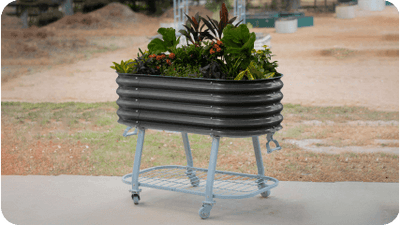








































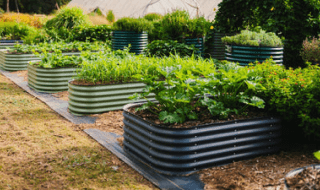
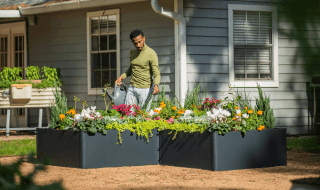
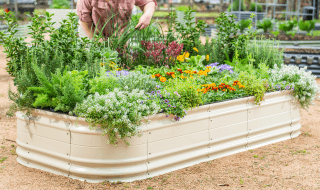
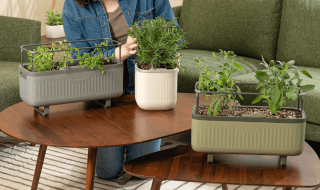
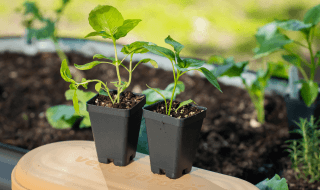
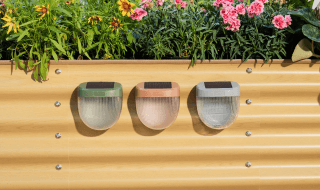
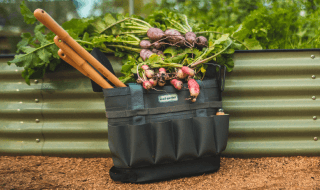
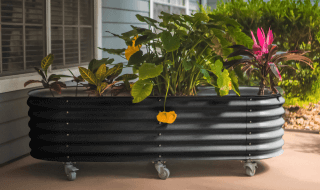








Leave a comment